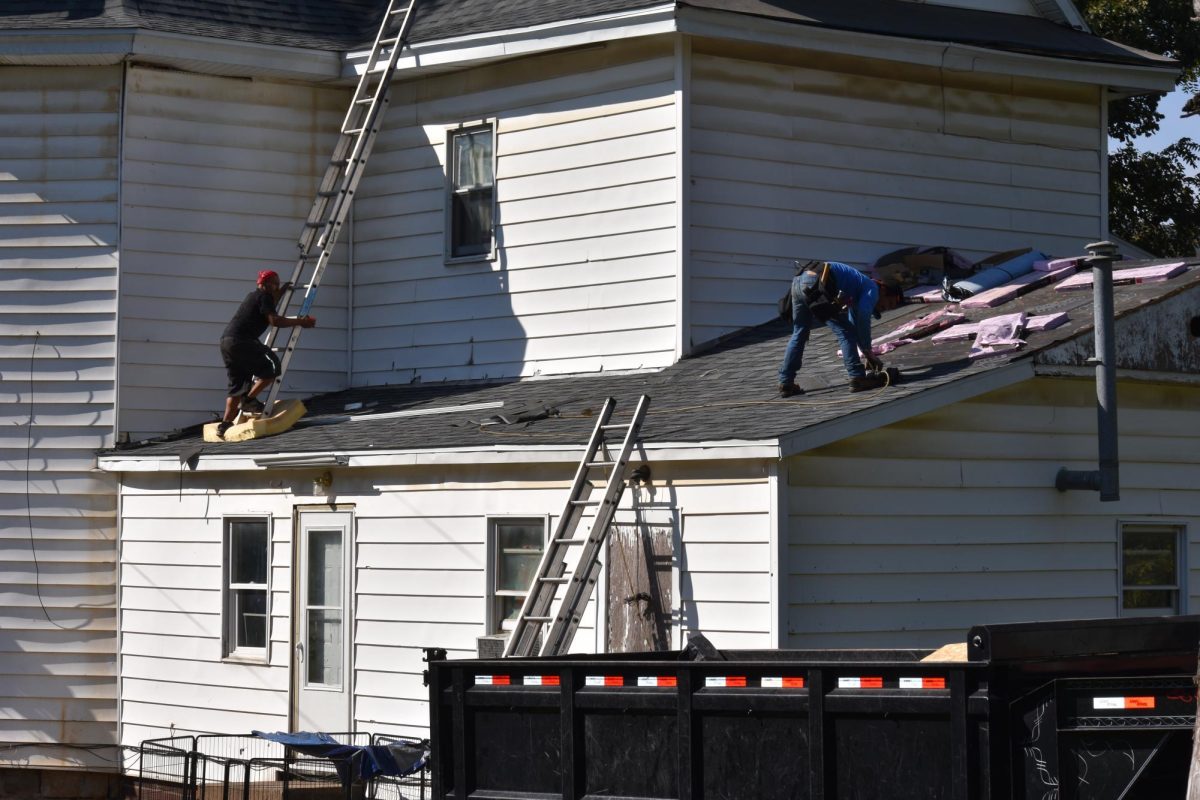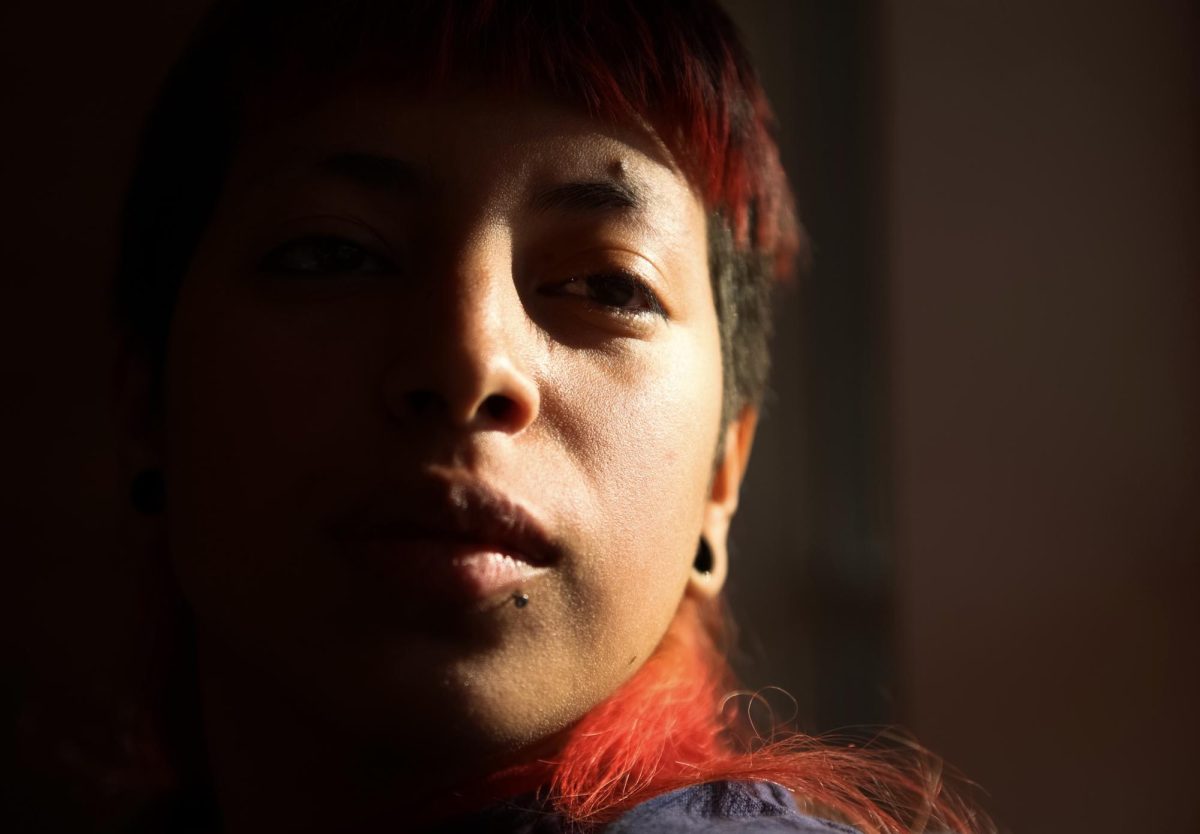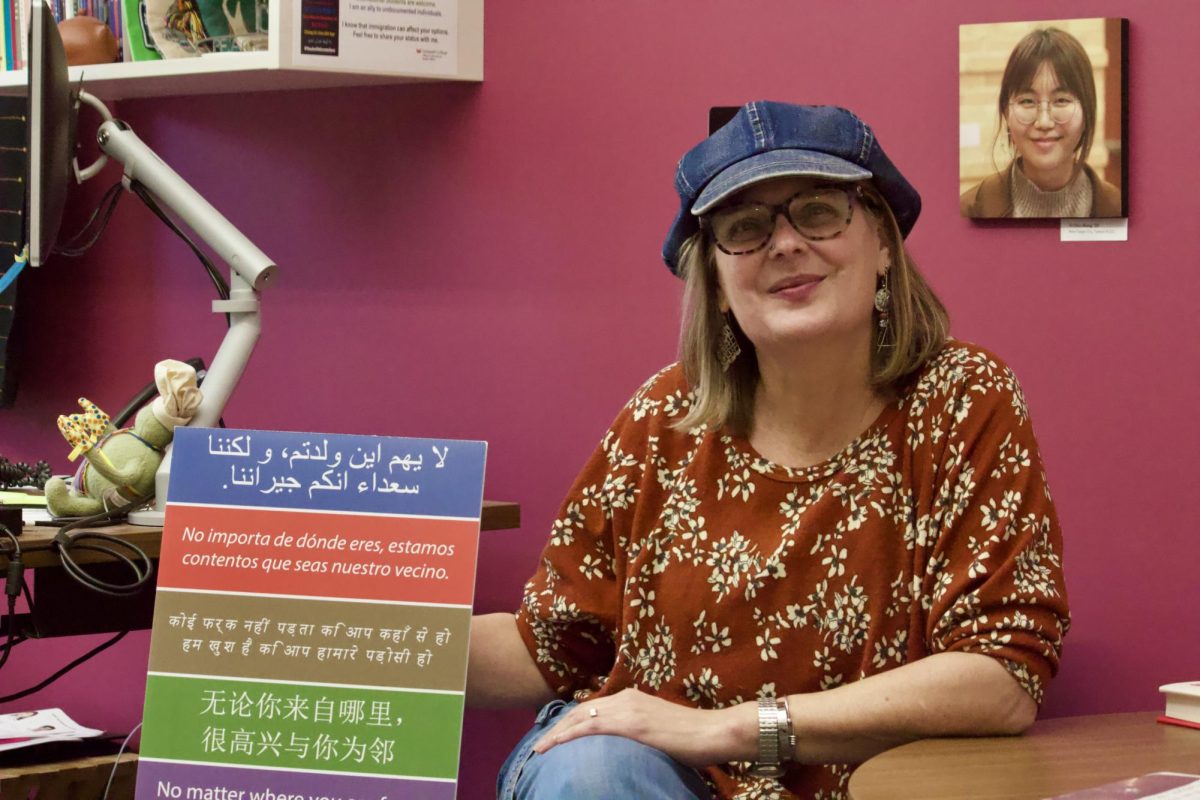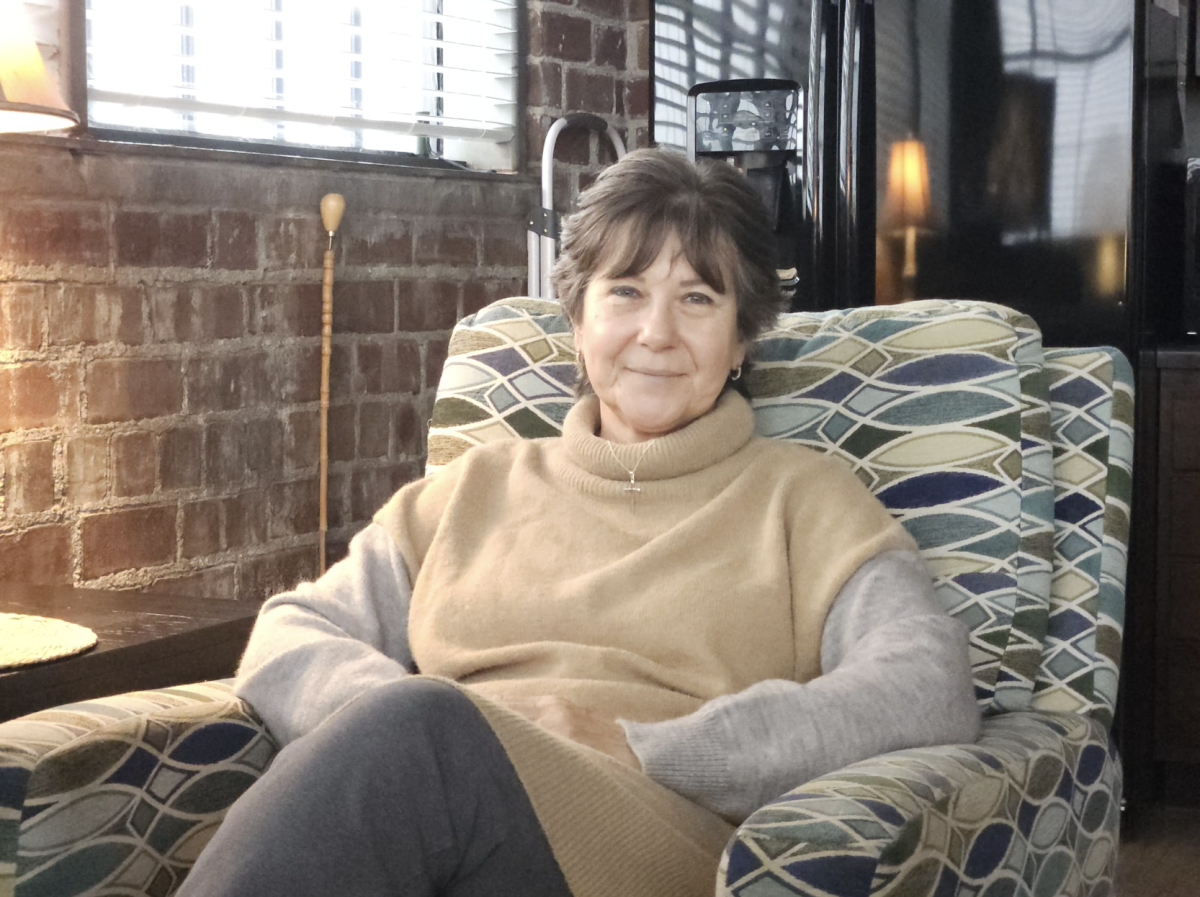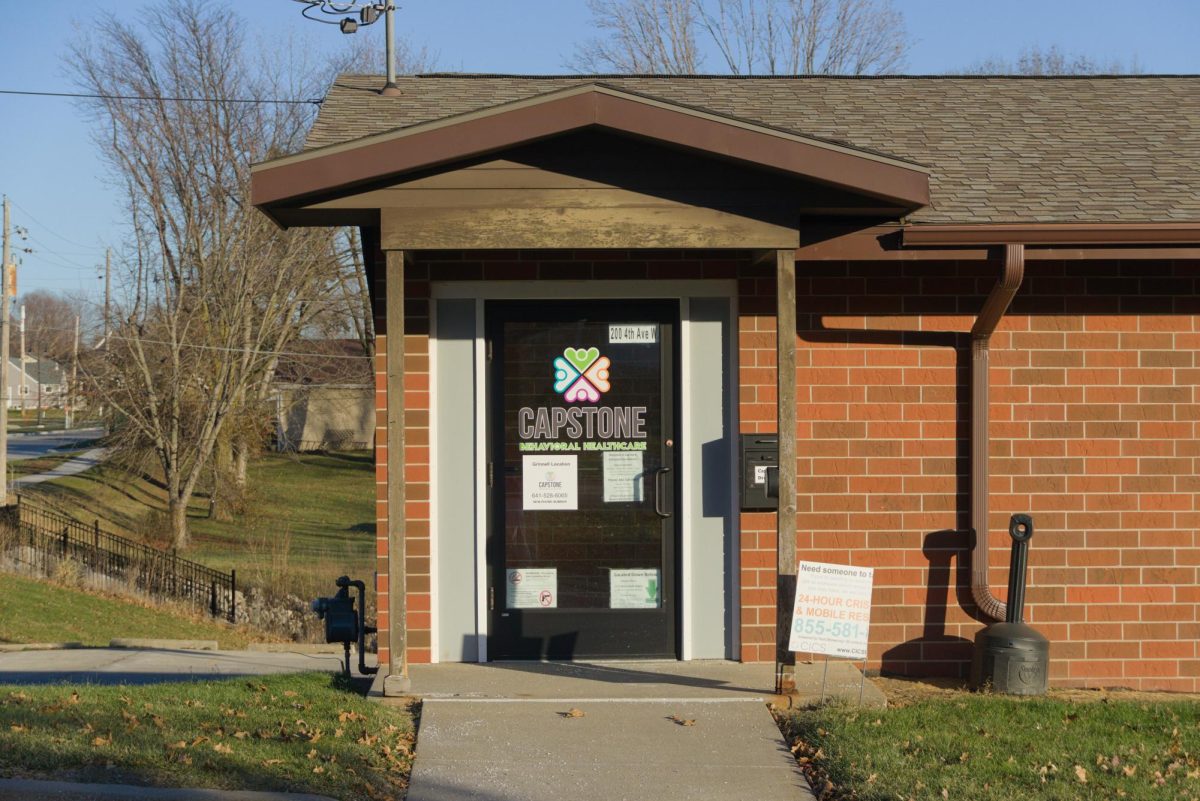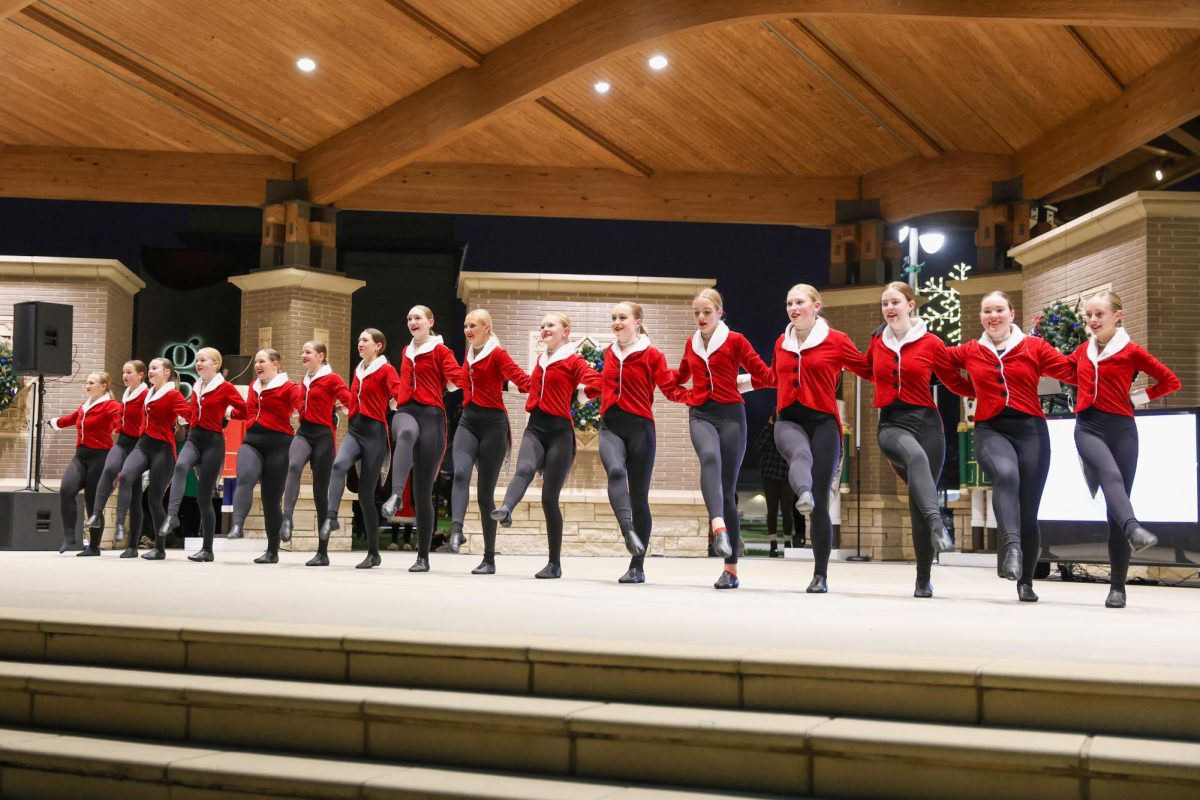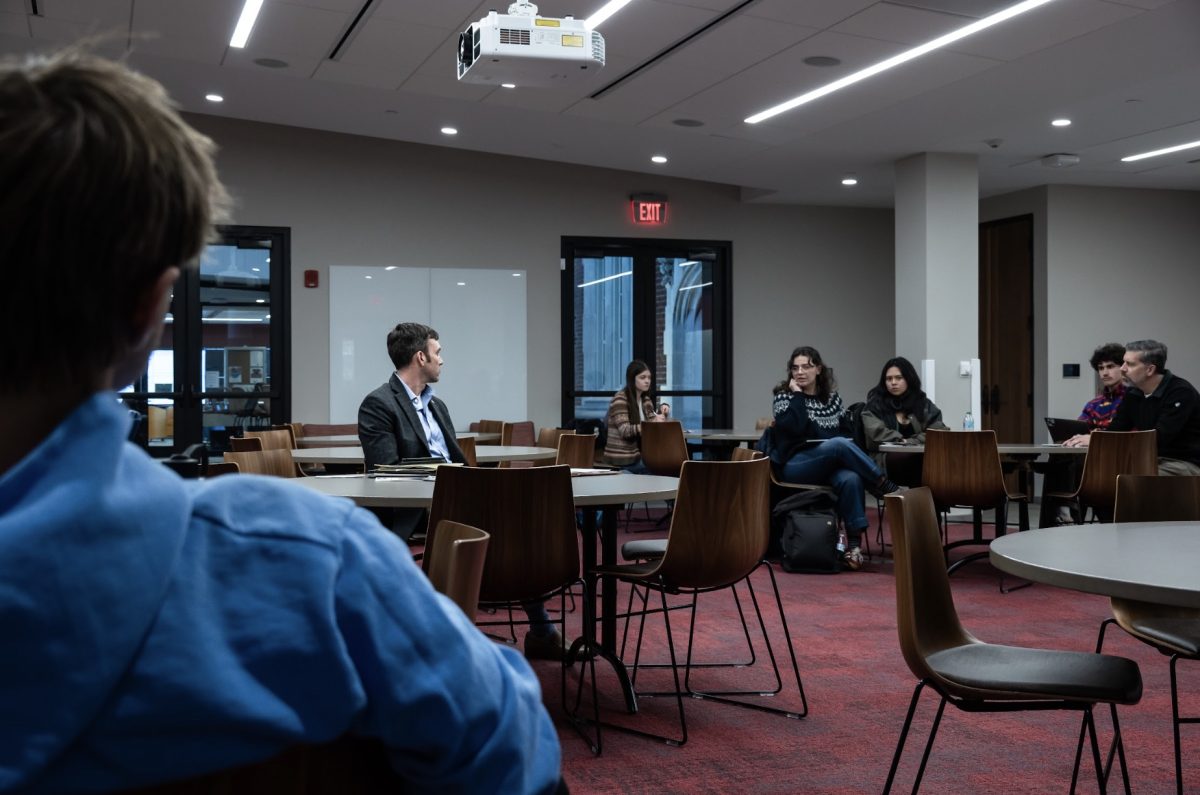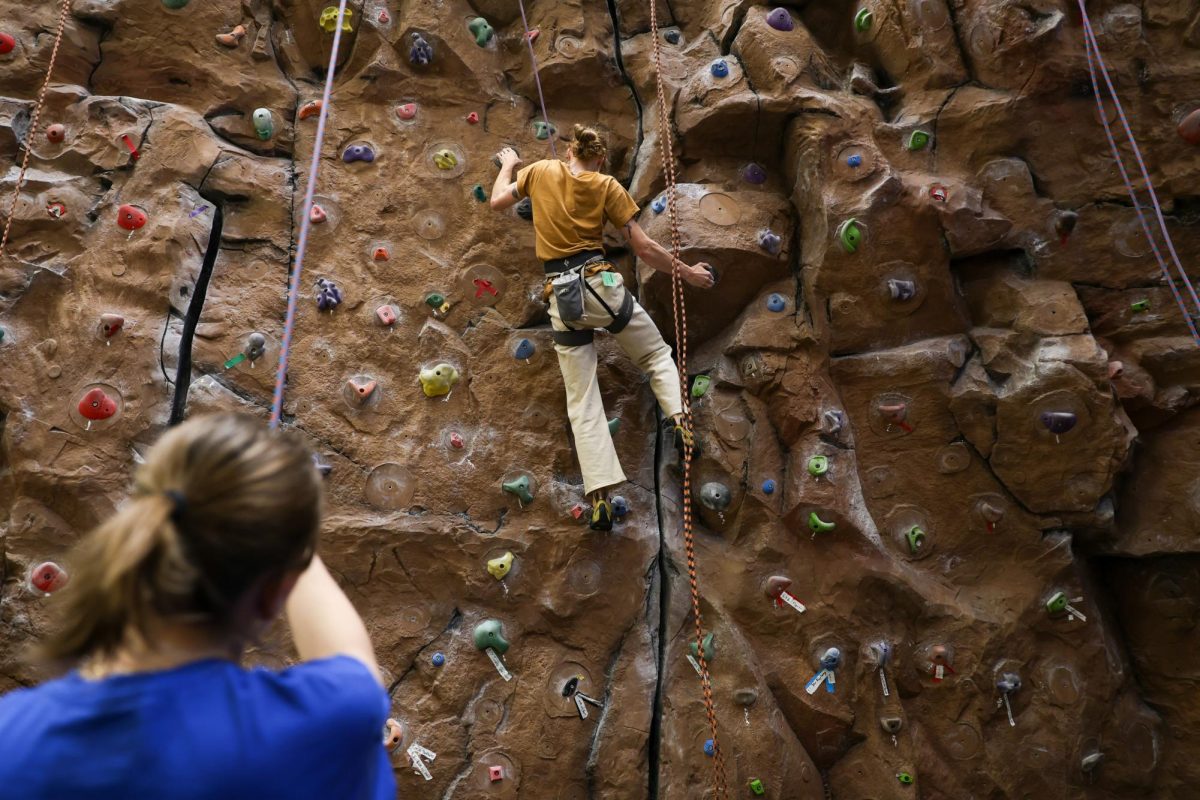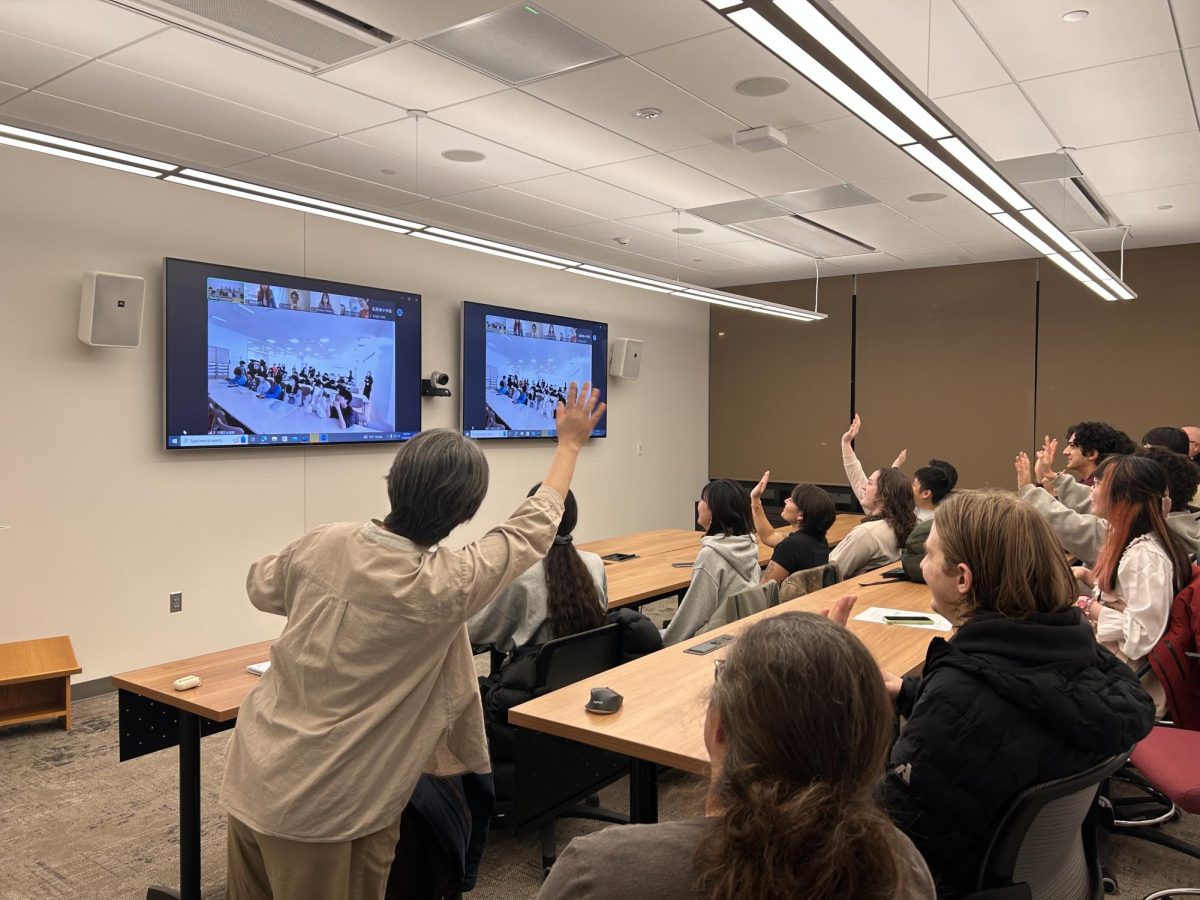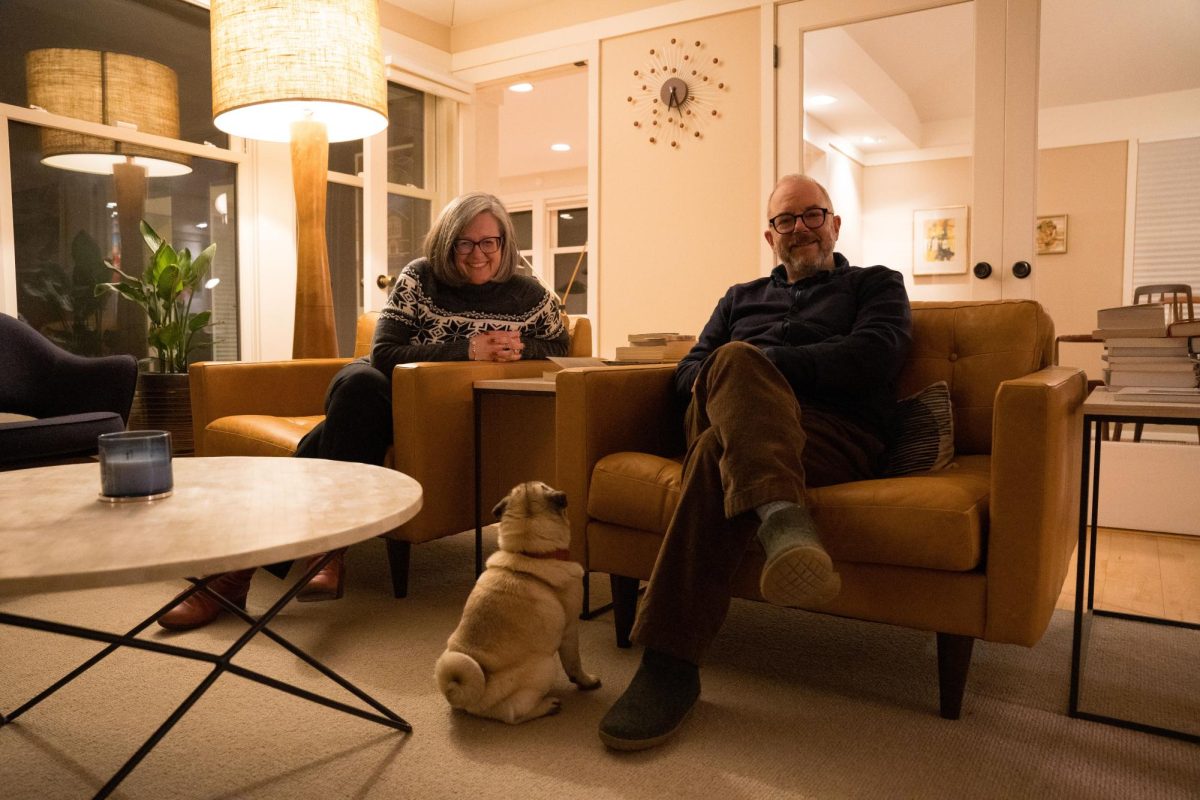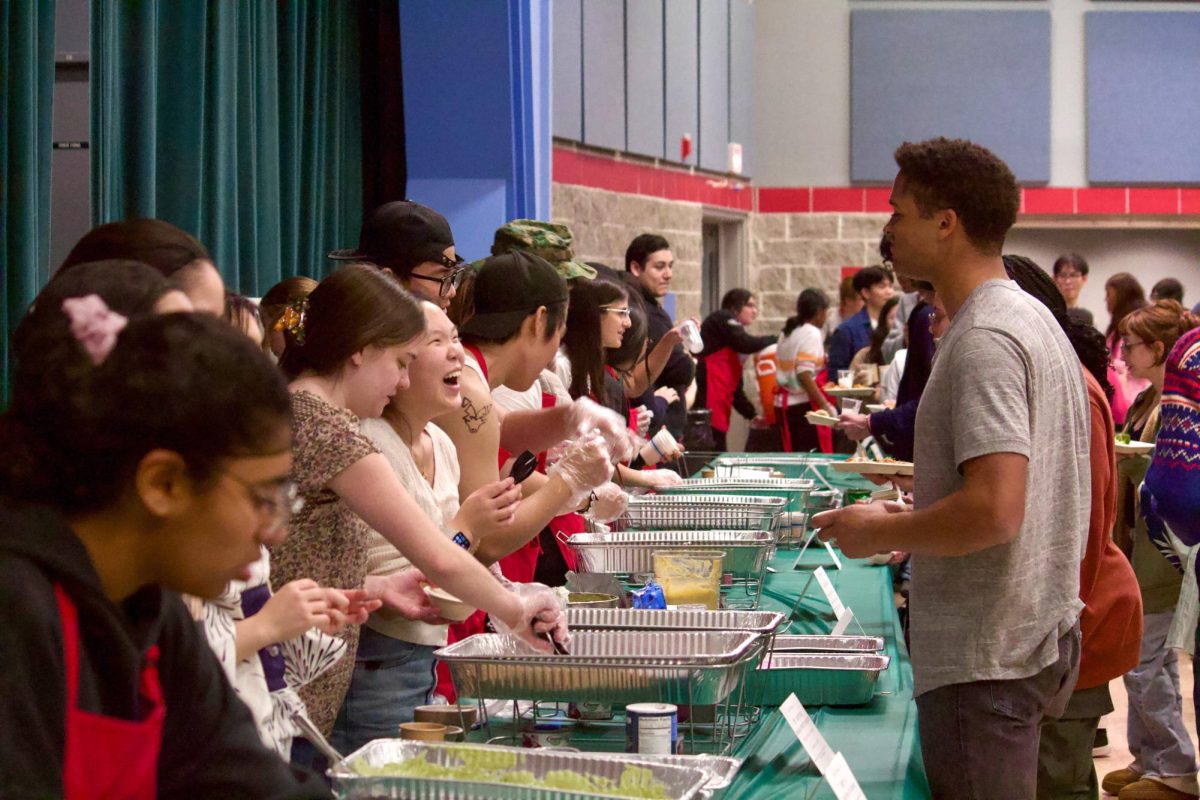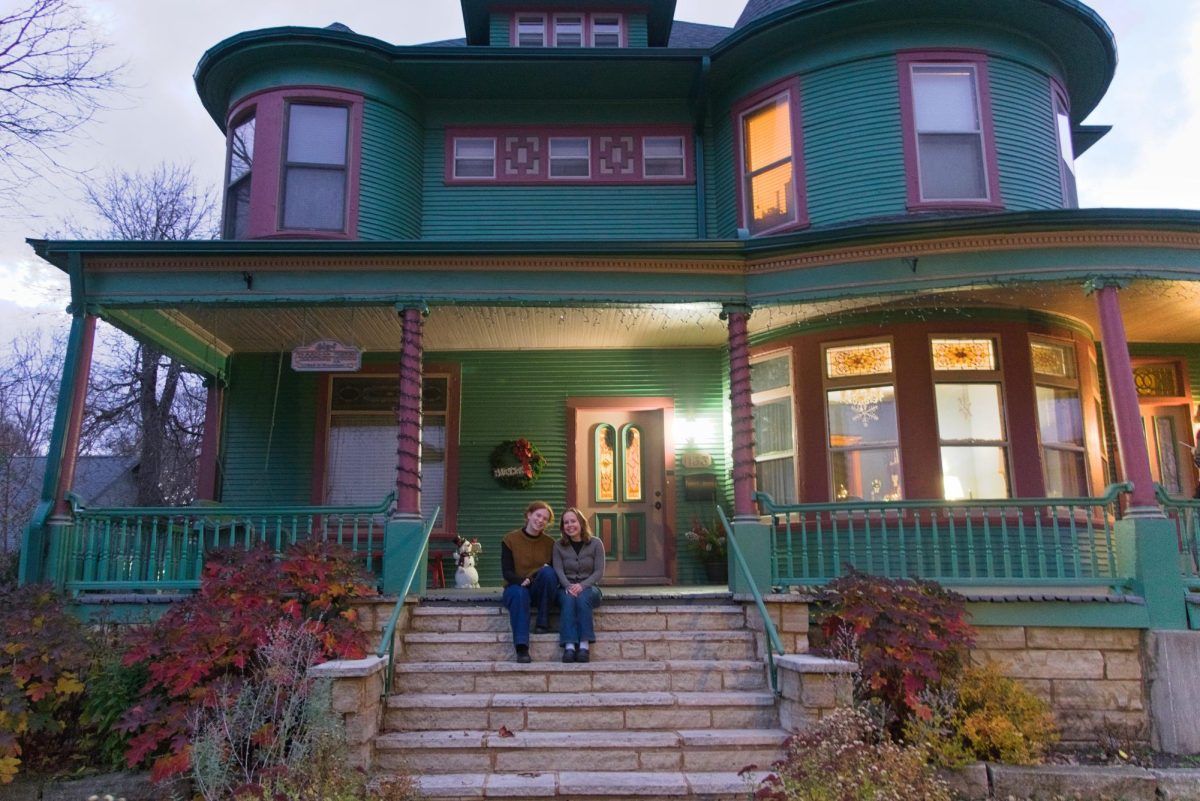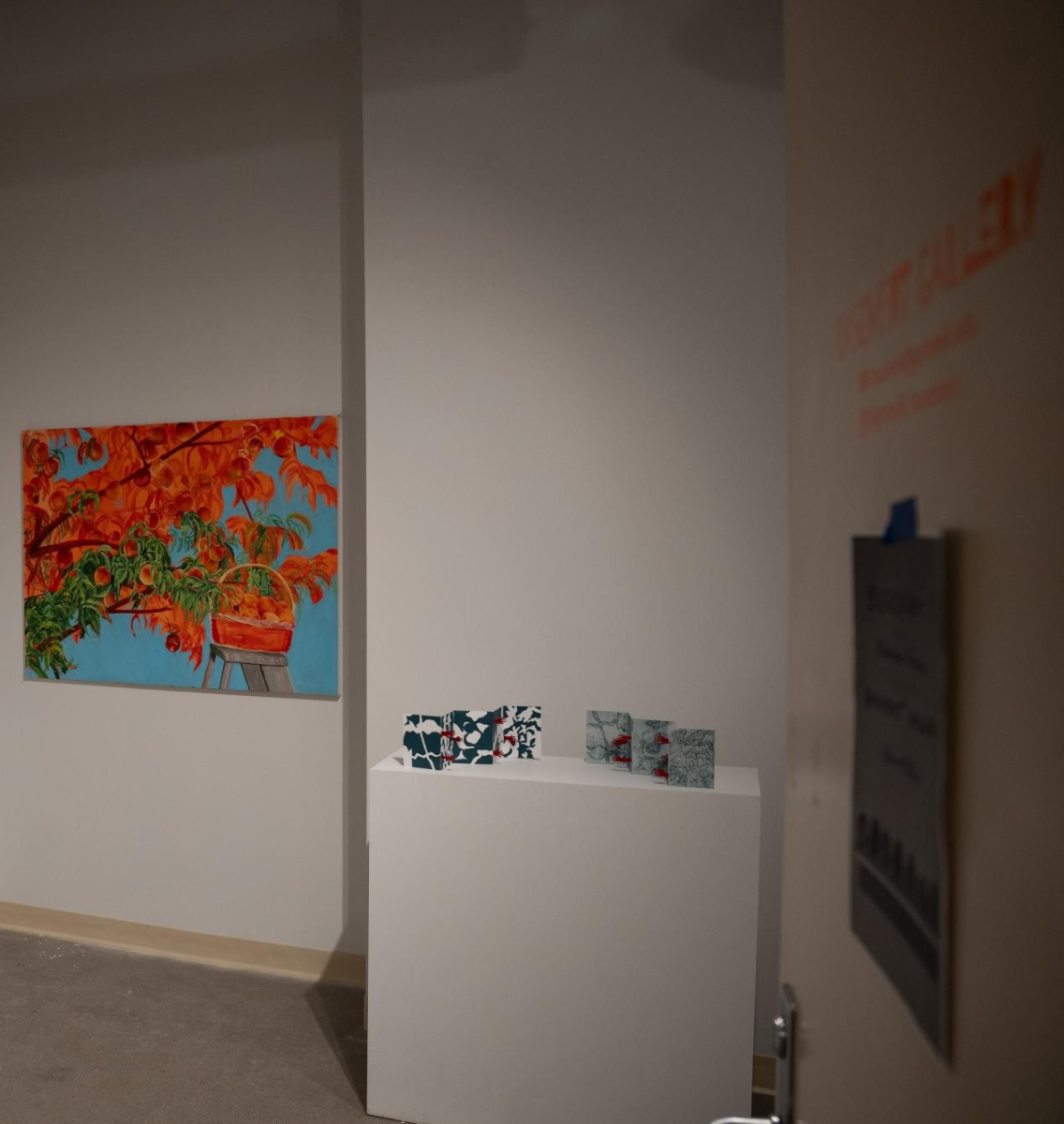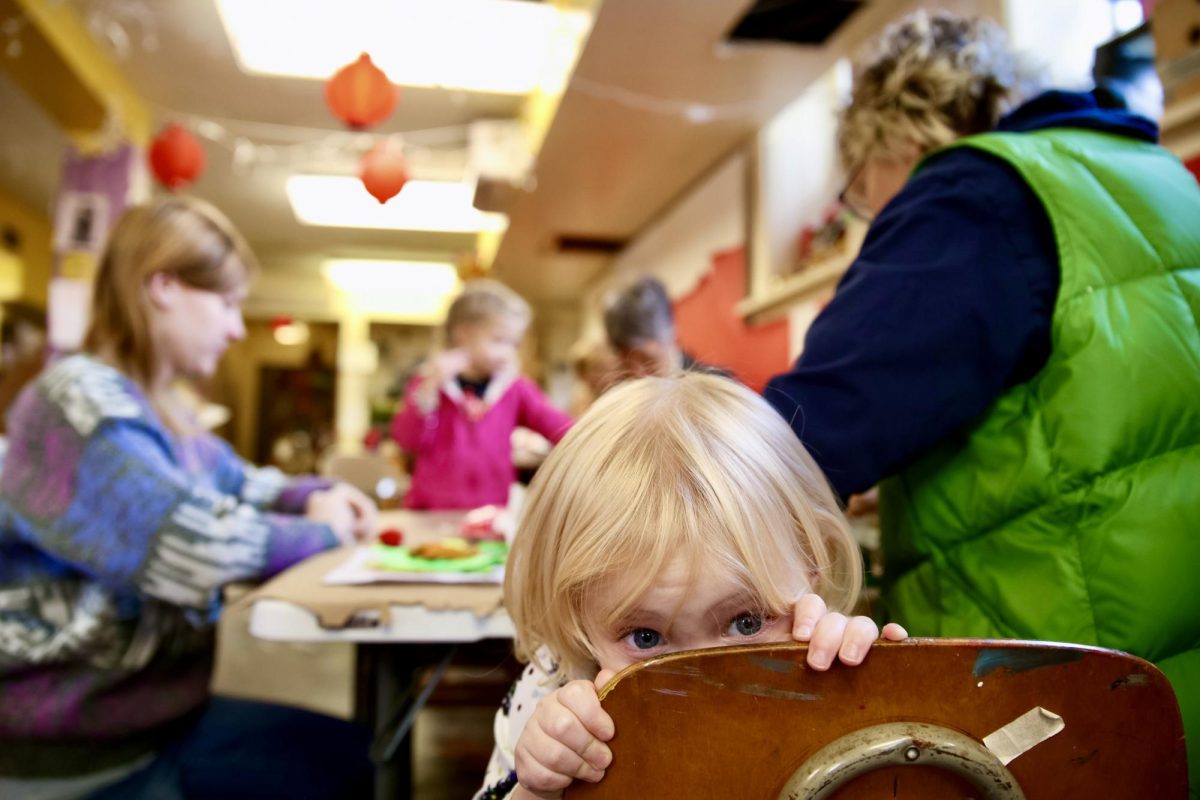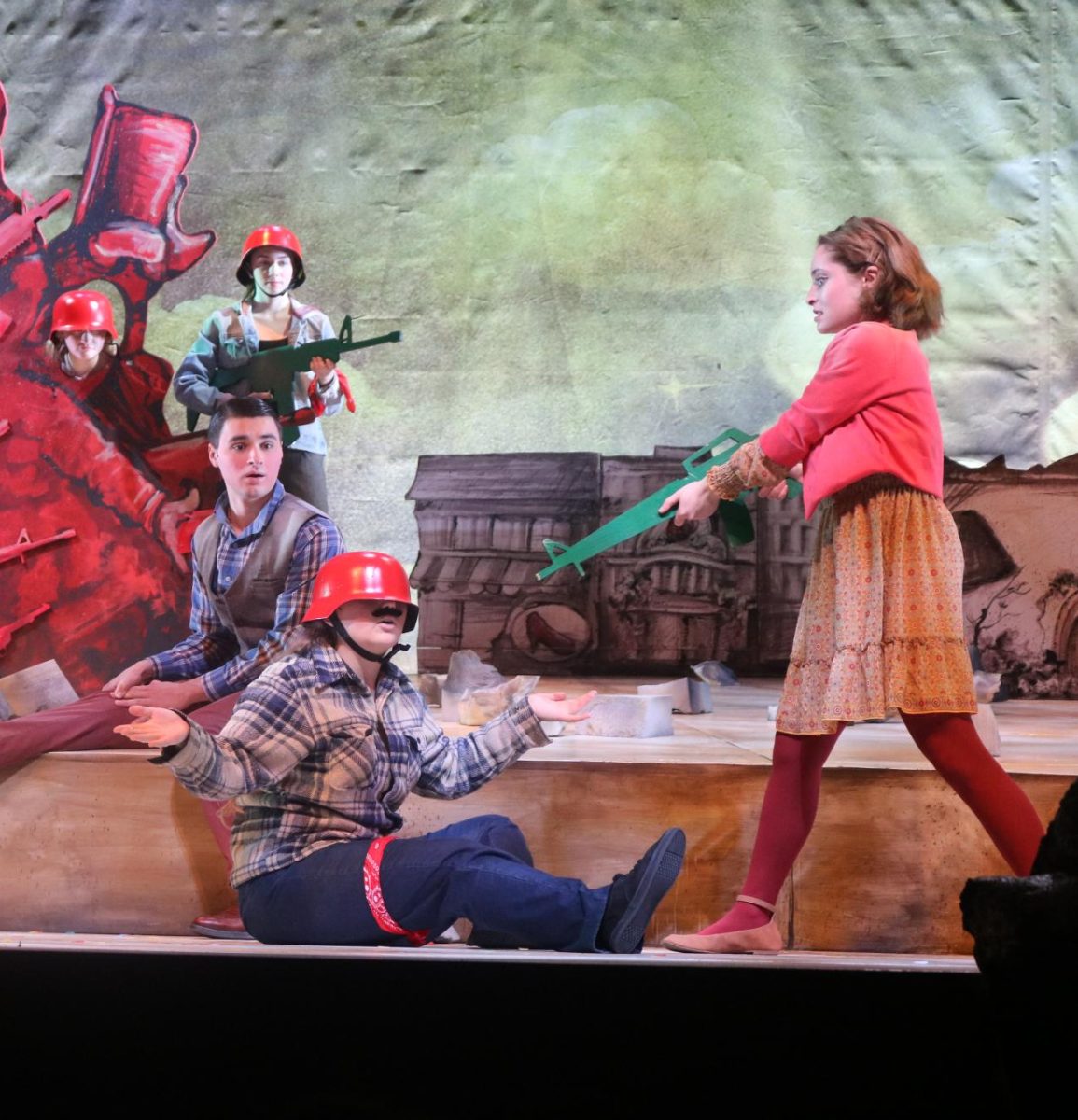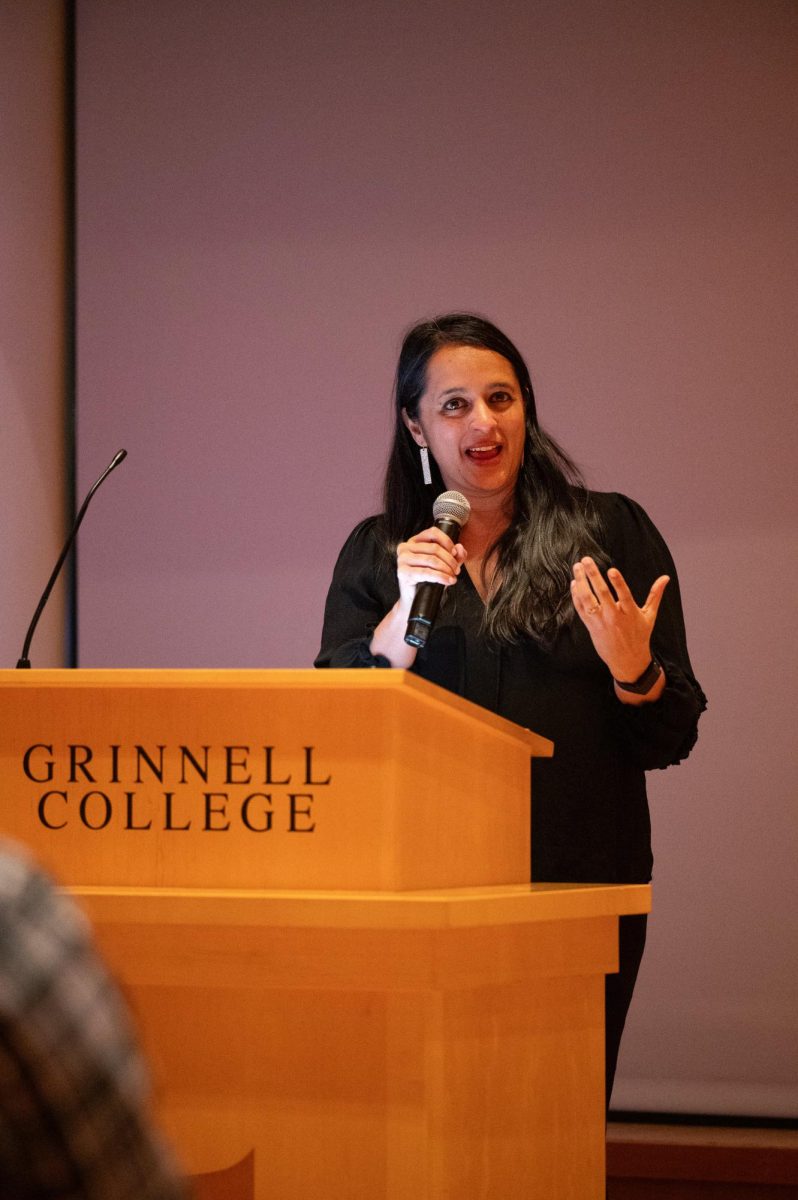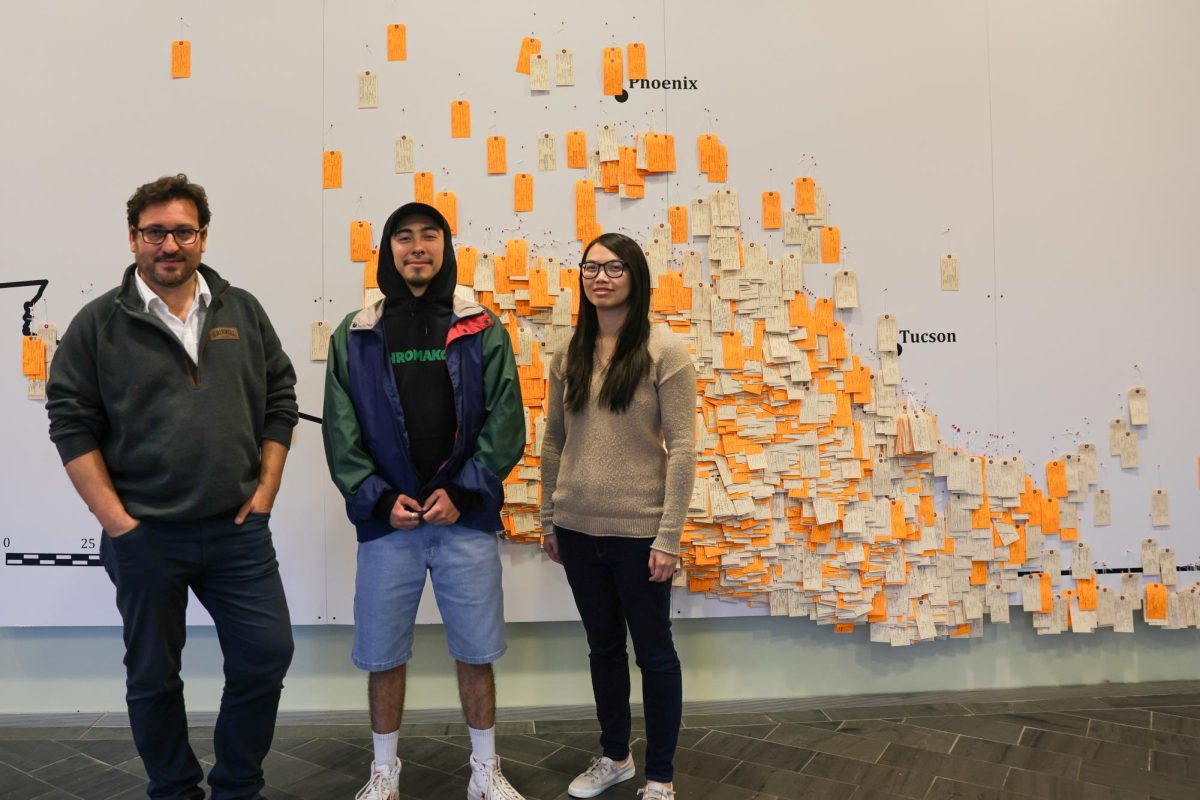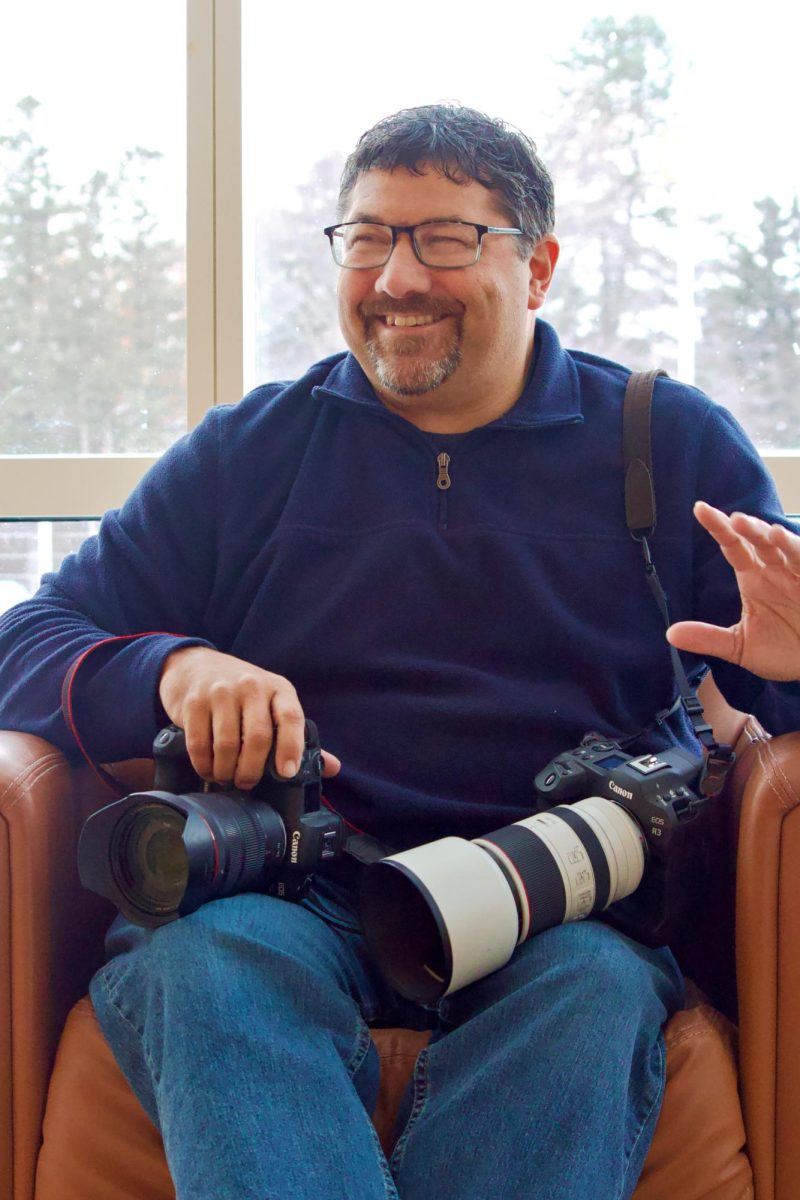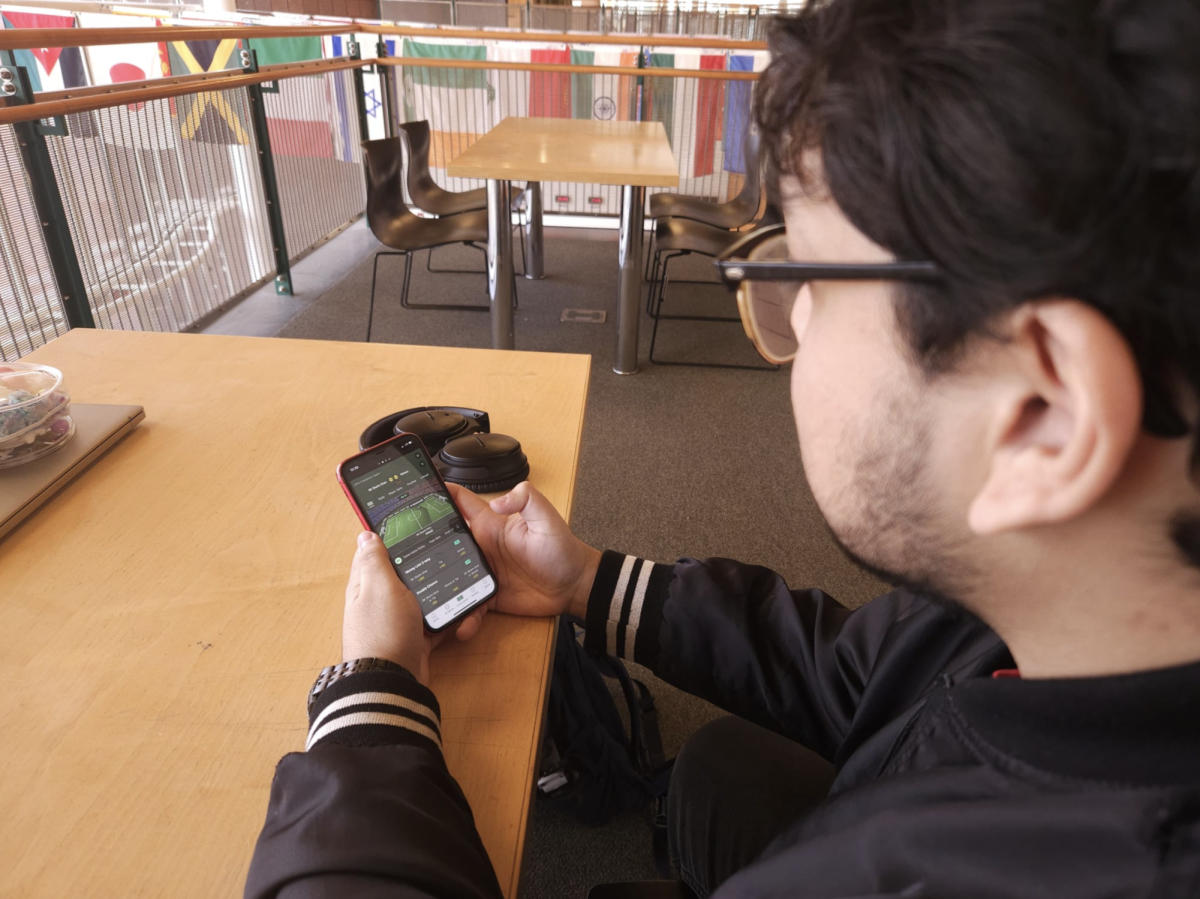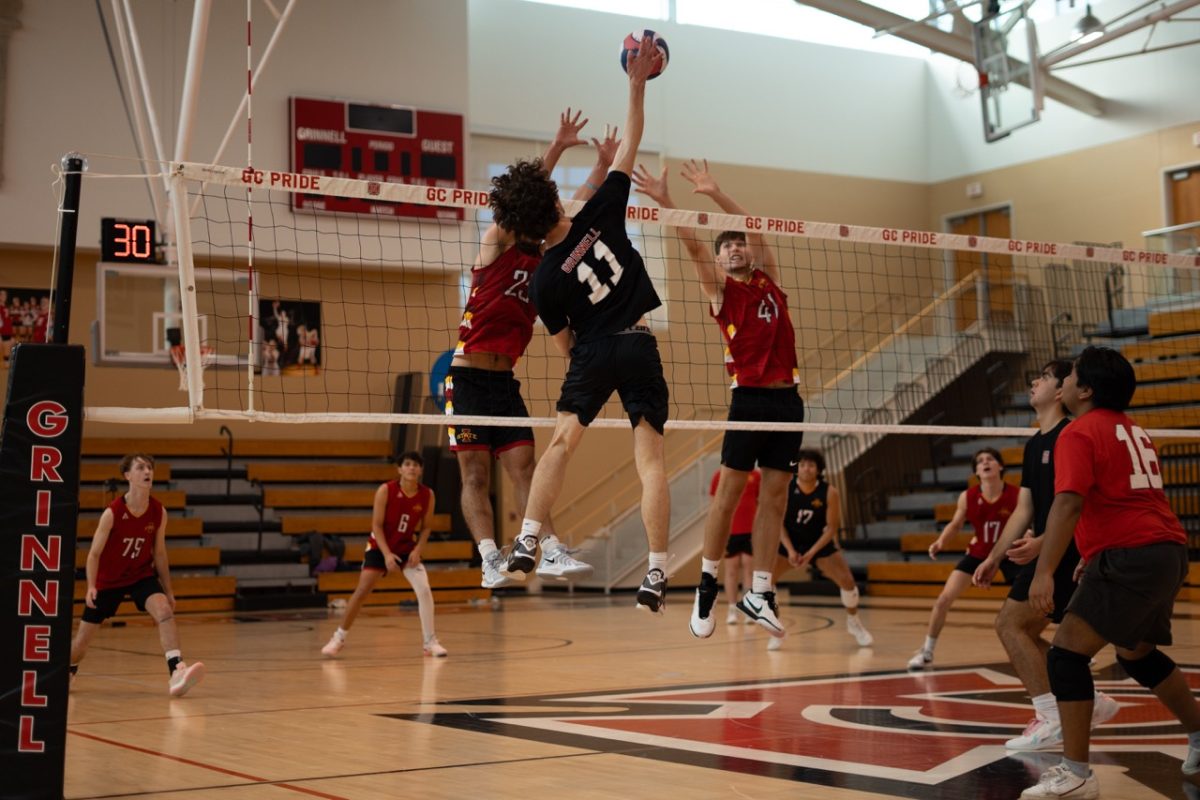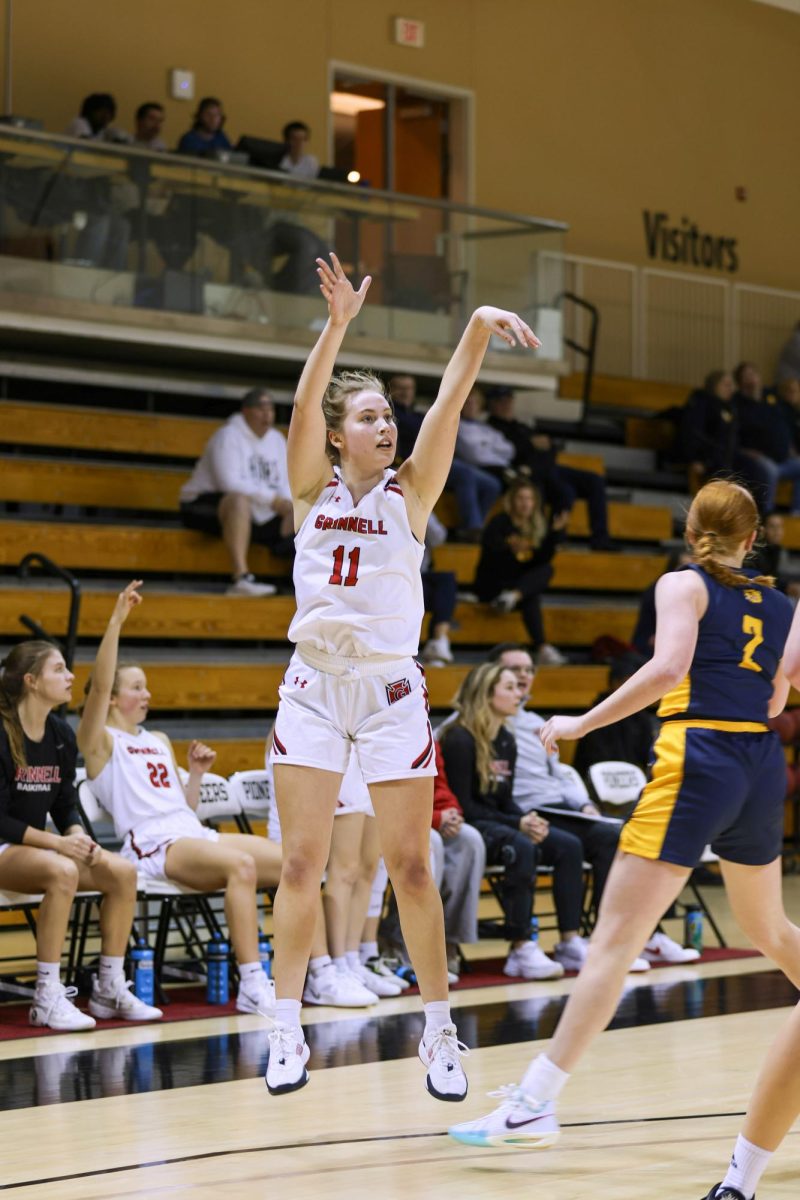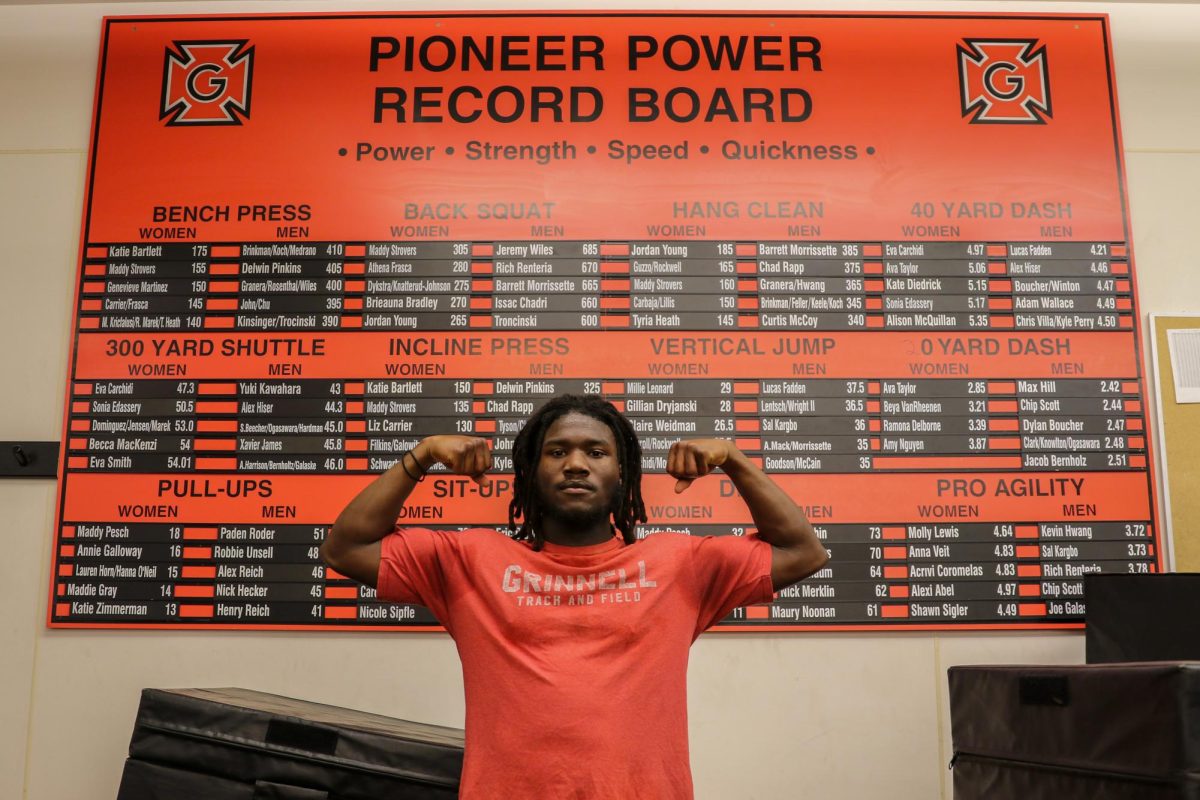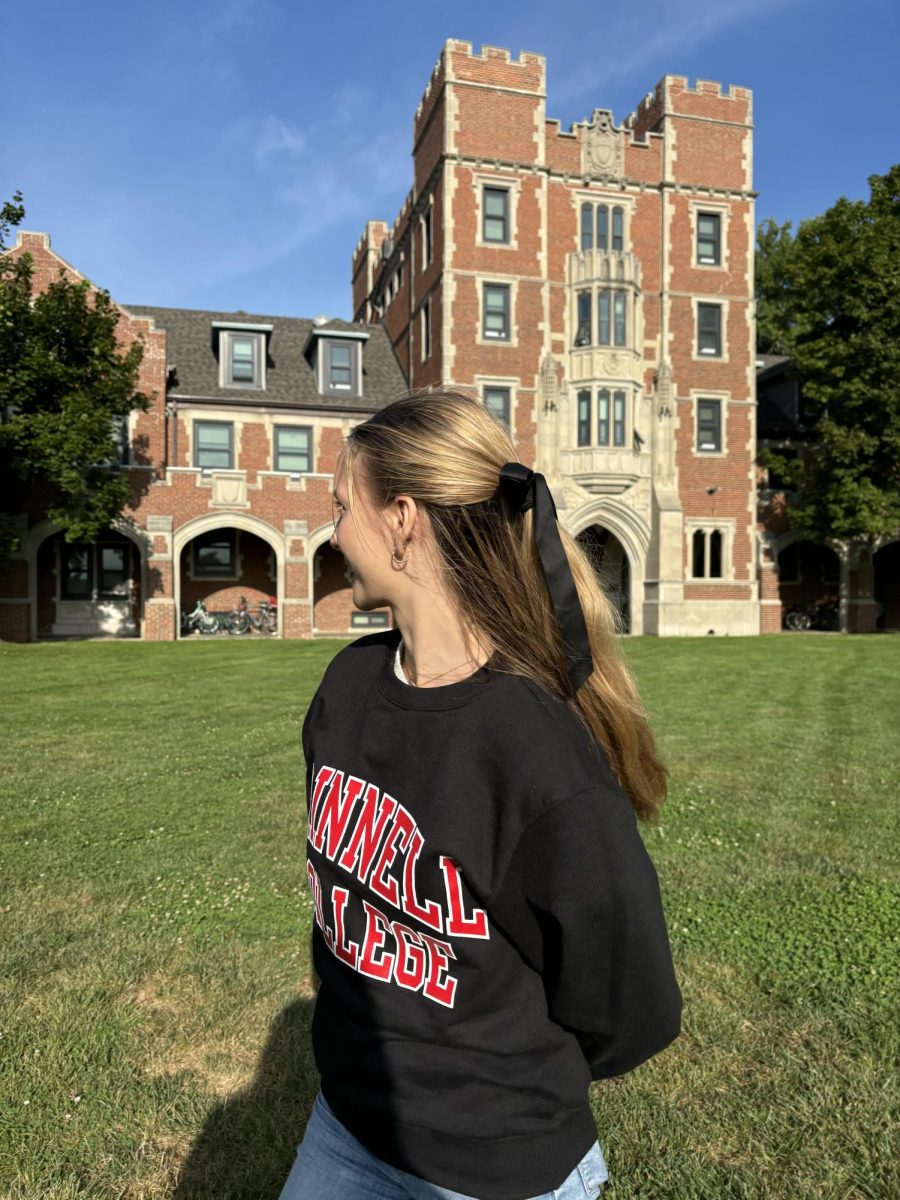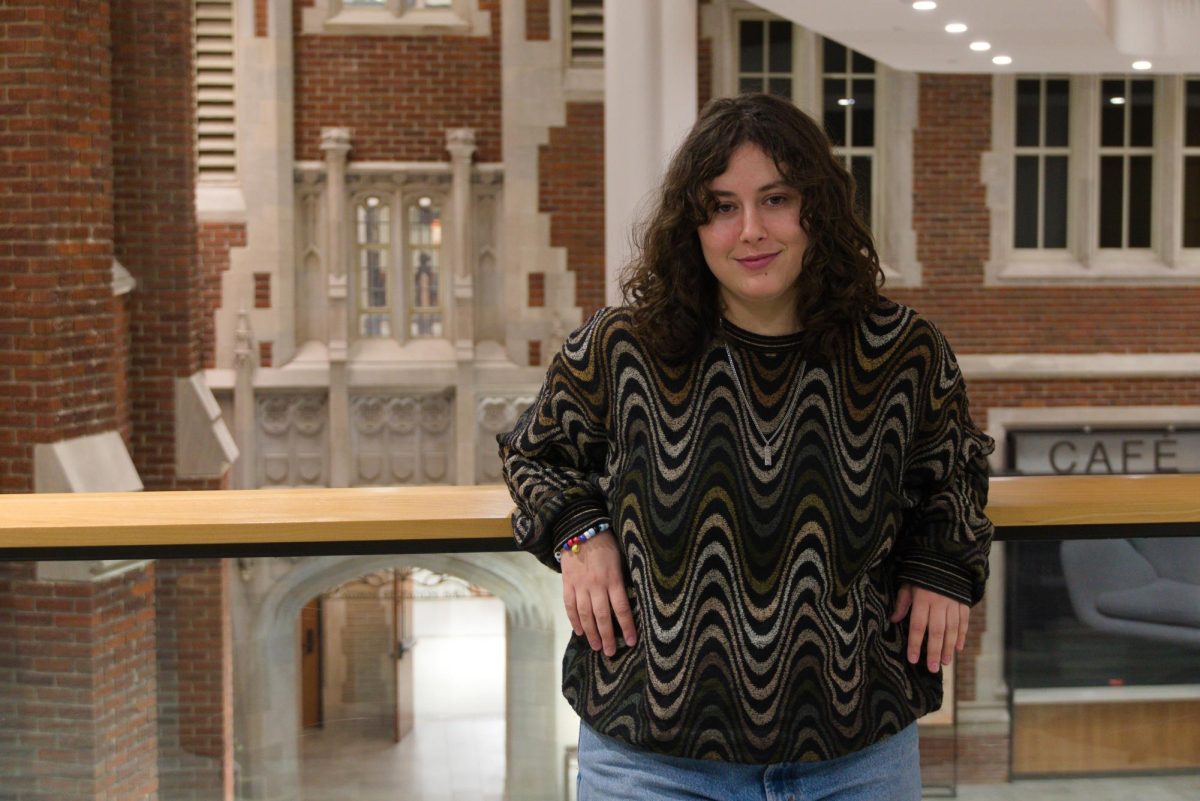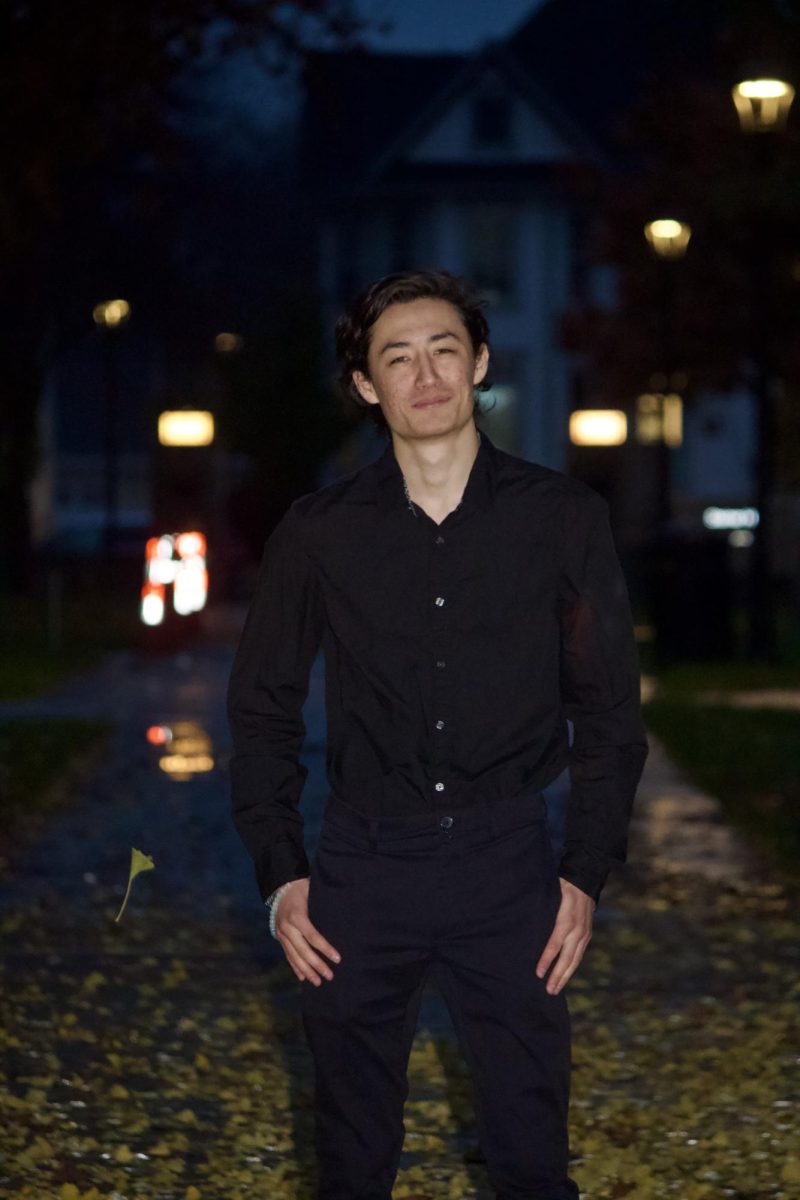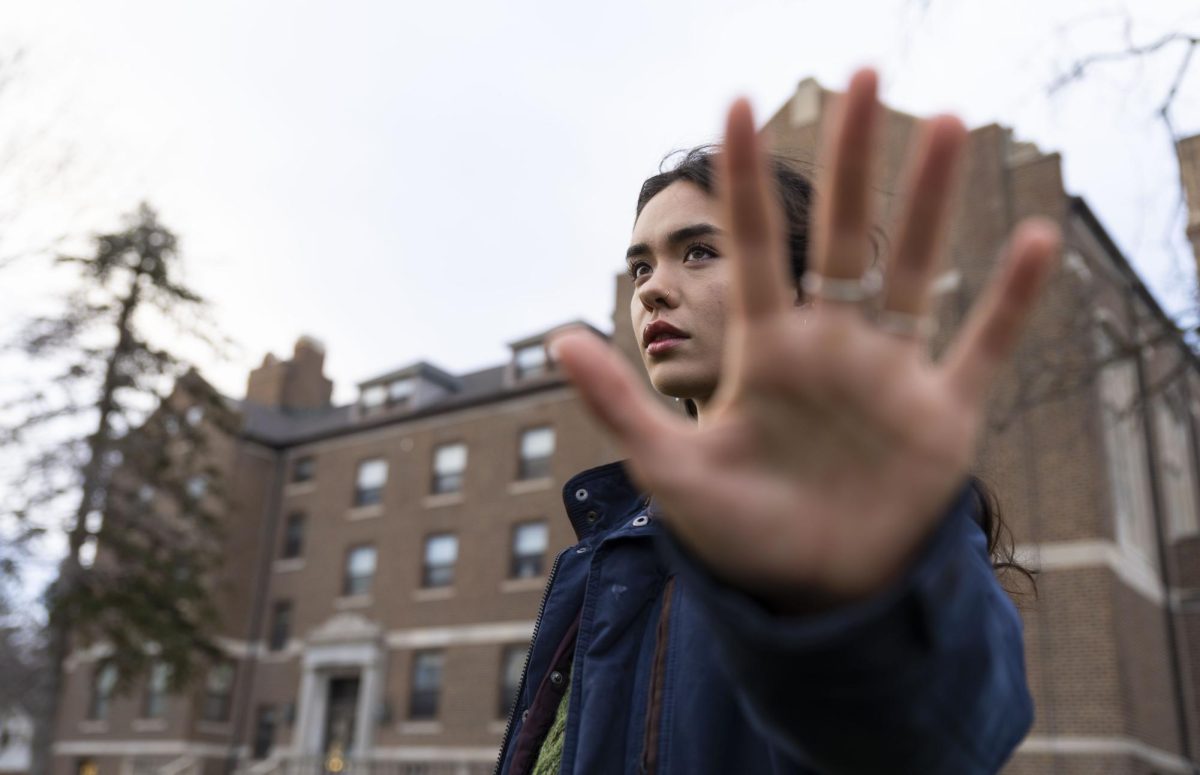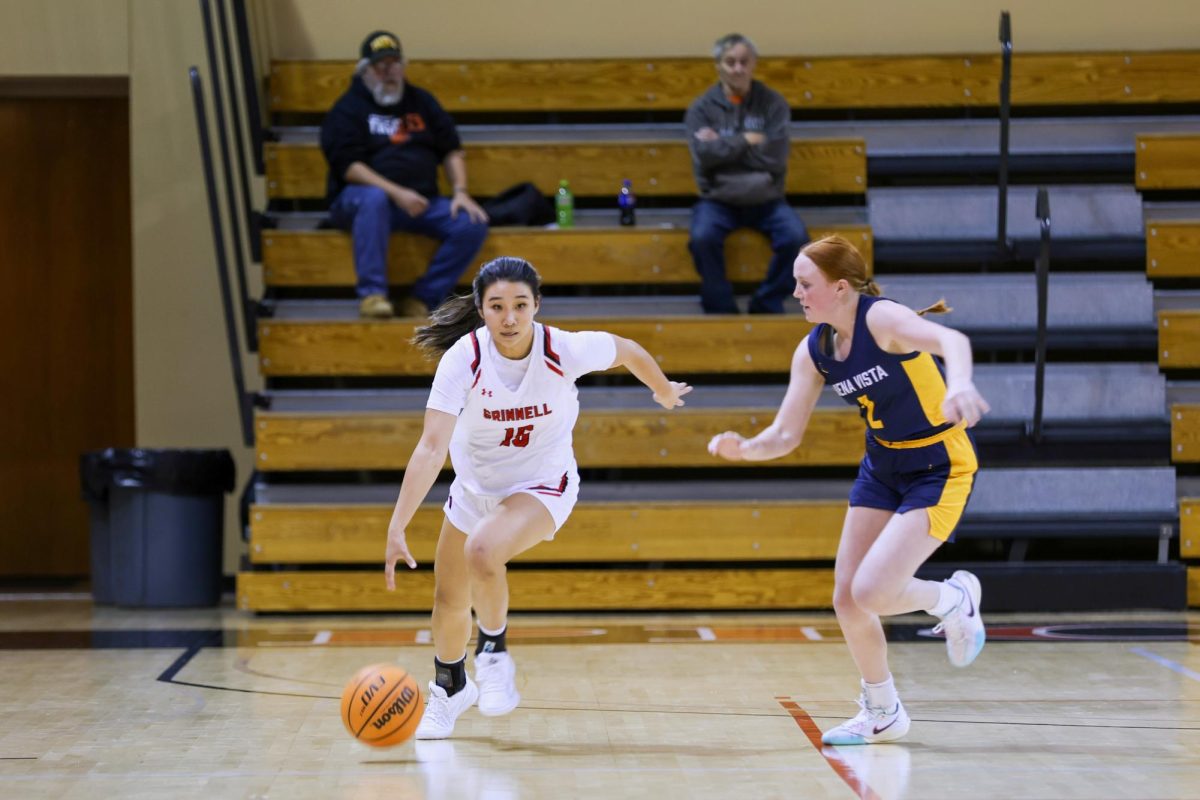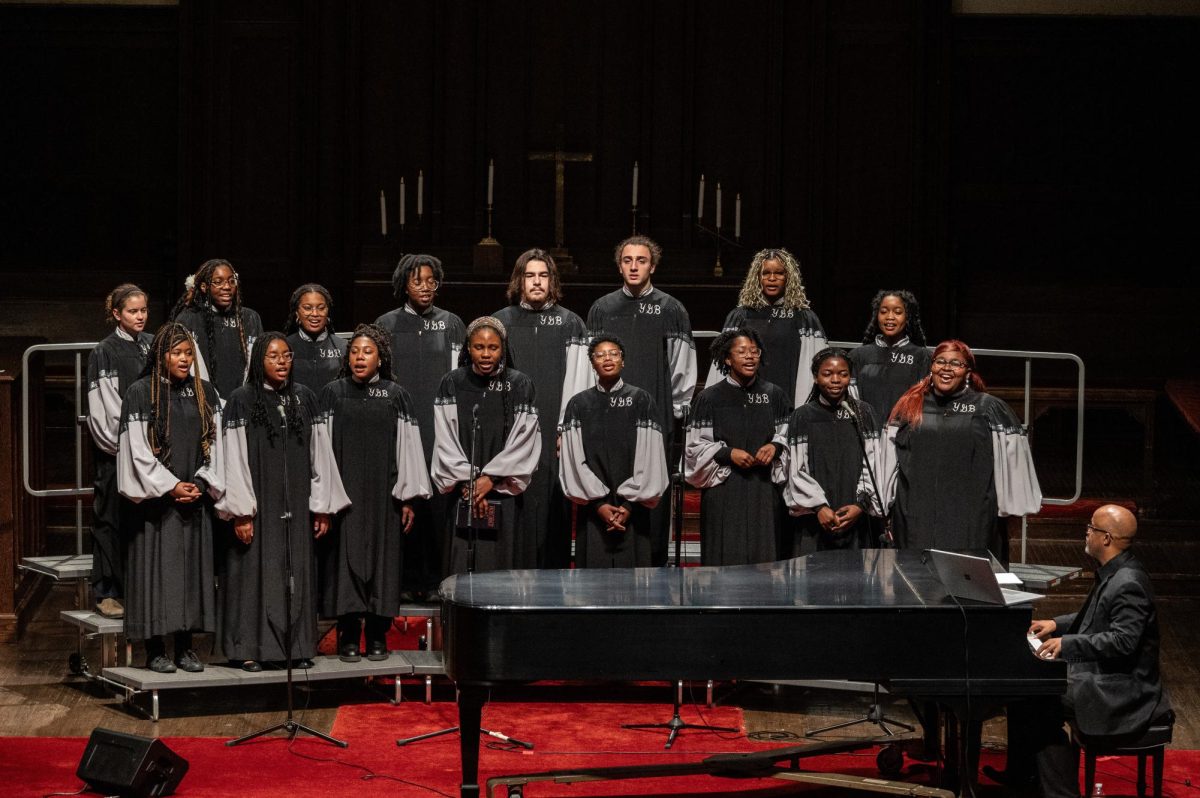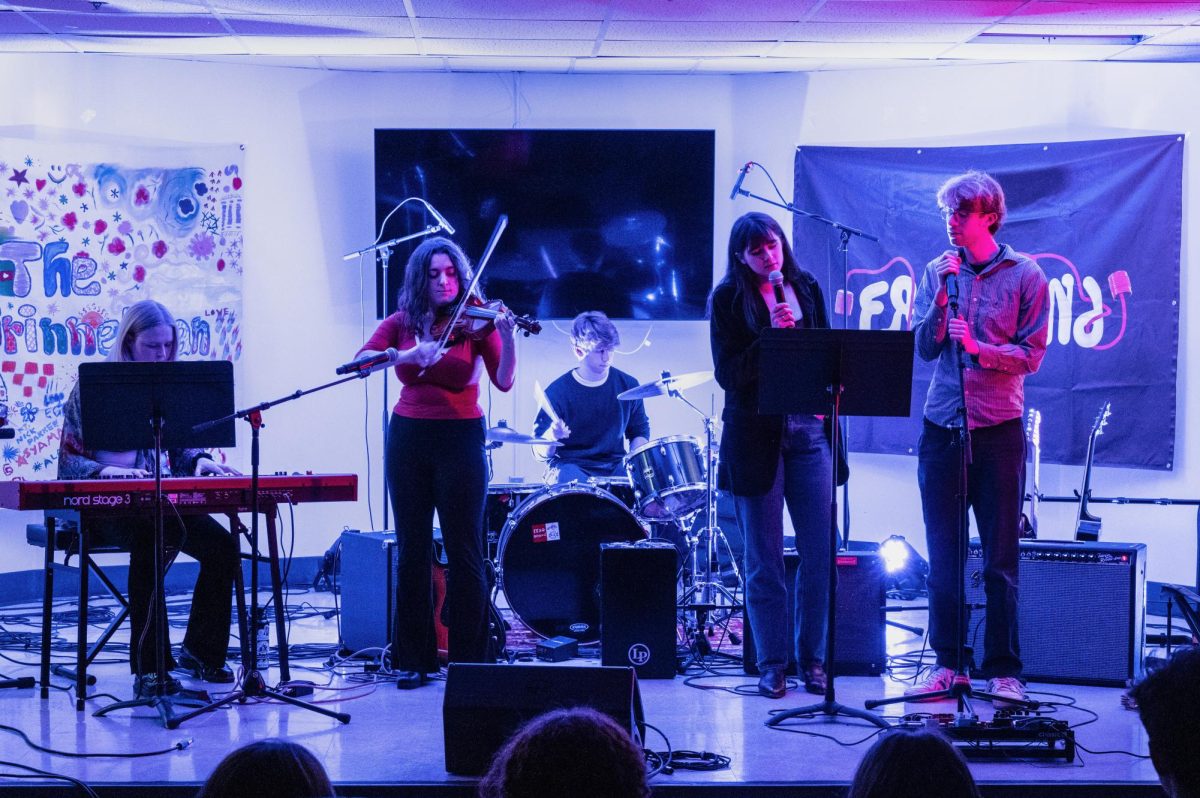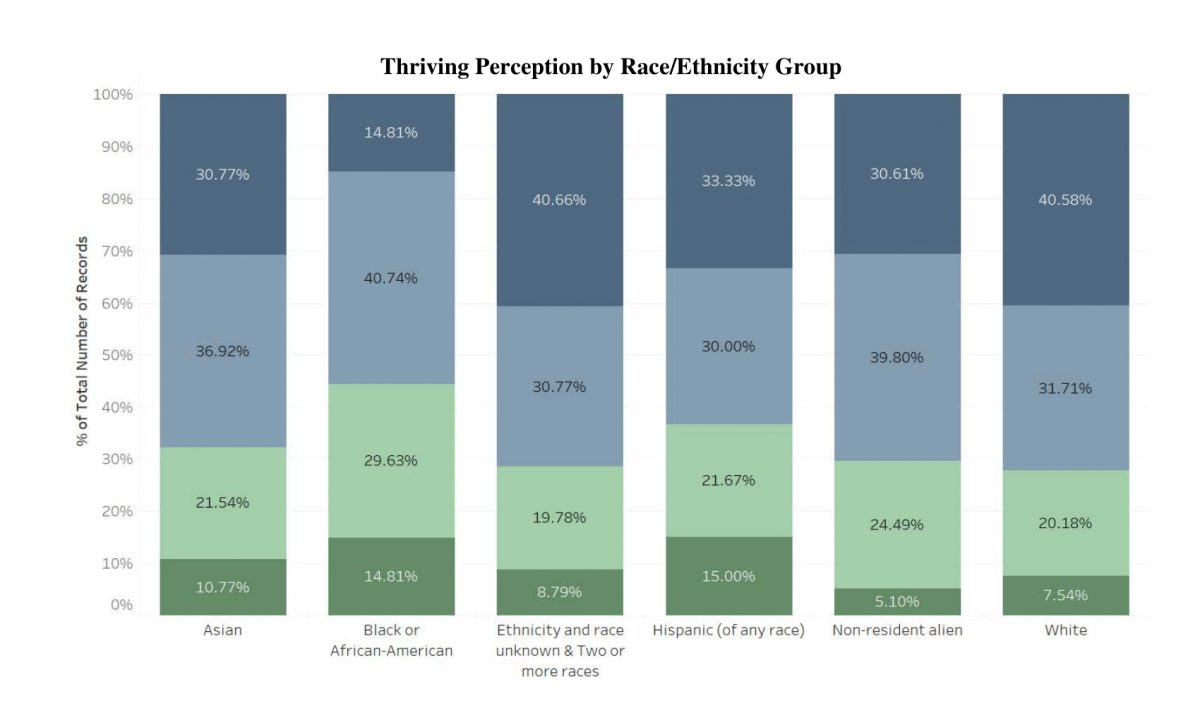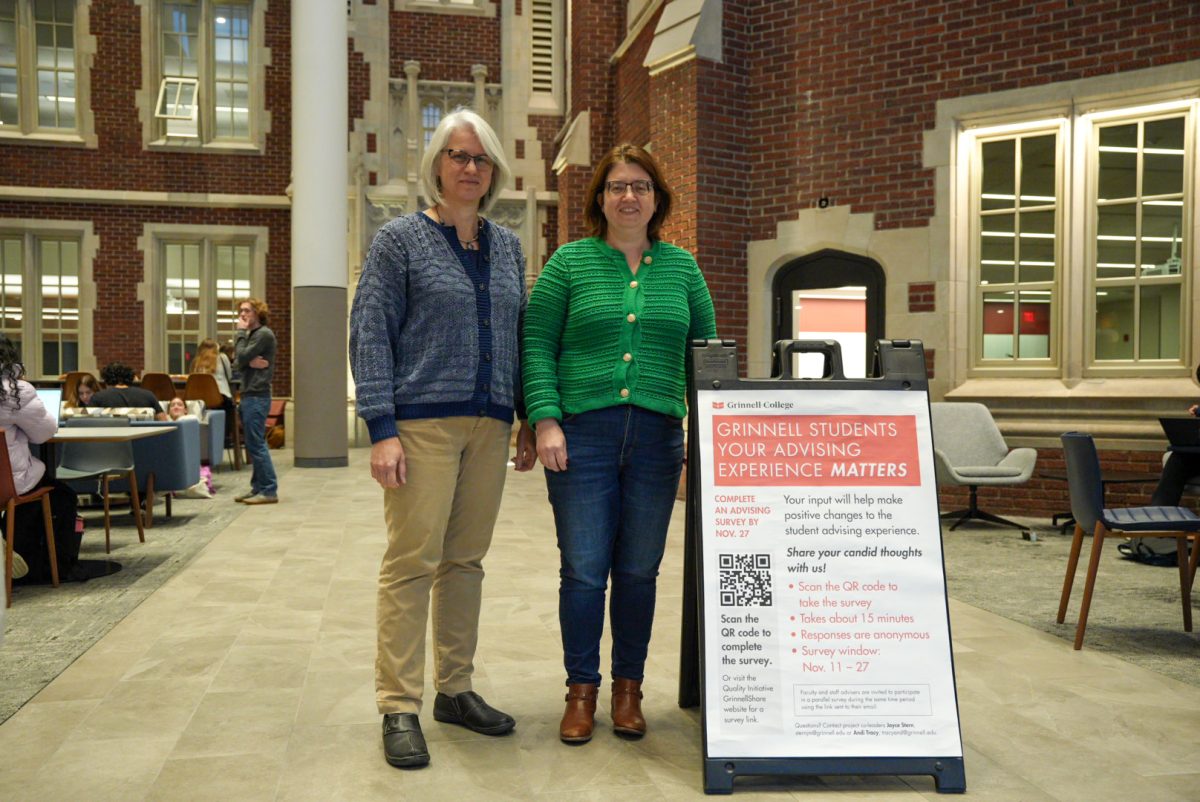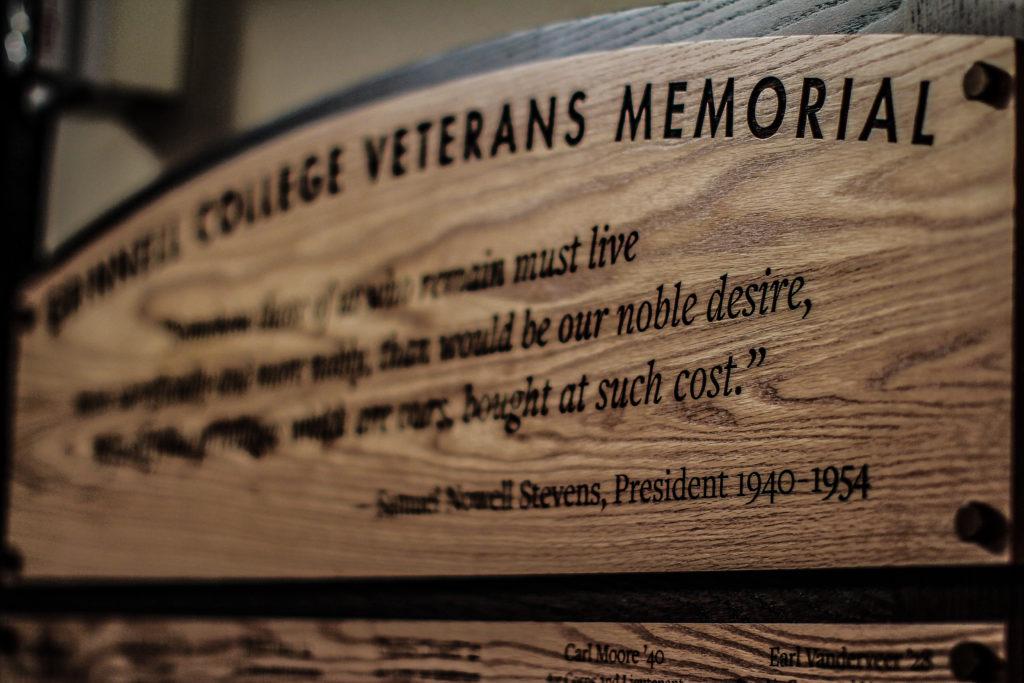
Nearly 75 years in the making, Grinnell College finally has its long-awaited memorial to students and alumni who lost their lives in the service of their country. The memorial was unveiled in a ceremony on Monday afternoon.
Since 1865, a memorial to the 11 Grinnell students who lost their lives in the Civil War has been on display in Herrick Chapel.
In 1945, then President Samuel Stevens made a promise to the family of Jimmy Ley ’44. Ley died serving in the military during WWII.
In a letter, Stevens vowed to update the monument with the names of all of the Grinnell students who died serving in World War II. However, the letter was soon lost to history.
It would be years until this plan would actually come to fruition.
“I don’t think many people here even knew that such a promise had been made,” said Jackie Aanes, Director of Operations of the Office of Development and Alumni Relations, the department President Raynard Kington put in charge of the new memorial.
While looking through some of Ley’s old belongings, his family discovered President Stevens’ old letter. The family soon reached out Grinnell to ask where the promised memorial was located, but it soon became apparent that no such thing existed.
“We definitely wanted to make good on a promise,” said Aanes. “It was the right thing to do.”
Eventually, it was decided that a new memorial honoring Grinnell students who had died while serving their country in any conflict, not just WWII, needed to be built.
But before a proper memorial could be created, the College had to find information on every former student who had died in conflict. Through extensive research, including in The Scarlet & Black archives and the National Archives, the College was able to compile a list of 72 names.
Aanes noted that Reece Downey ’21 spent a considerable amount of time last summer documenting and researching the former students who needed to be included.
The 72 names were eventually added to a new plaque that compliments the 11 names from the Civil War. Despite the thorough research, there may still be some names not included, especially from earlier conflicts such as World War I.
“We may not know their family to even contact them,” said Aanes. “If anyone has additional names, we designed the plaque so that we could update it. If we’ve missed names, we want to know so we can get that right.”
The reaction around campus has been positive, especially among the school’s veteran faculty.
“I think recognizing people’s service is important, both to thank them for what they’ve done … and also for the family members of the people who have died,” said Jeffrey Blanchard, mathematics, a member of the United States Army from 1998-2007.
While considering the impact these kinds of have memorials, Blanchard focused on the family and friends of the deceased. “We don’t talk about it in terms of the sacrifices they made, but gold star families have made a sacrifice that isn’t brought up very often. This is who these types of memorials are for,” he said. “And they’re also for the veterans who survived. … I know lots of people who did [lose somebody], and the rest of their life is different.”
Professor Blanchard was also present at the unveiling ceremony, reading the 72 names to the assembled crowd of family, friends and former classmates.
“I didn’t anticipate the obstacle about how emotional it would be to read the names out to a group of people. On the fourth one I thought, ‘How am I going to read the fifth one?’”
Current students are welcome to stop by Herrick Chapel and take in the names of 82 Grinnellians being honored.
